Full text
PDF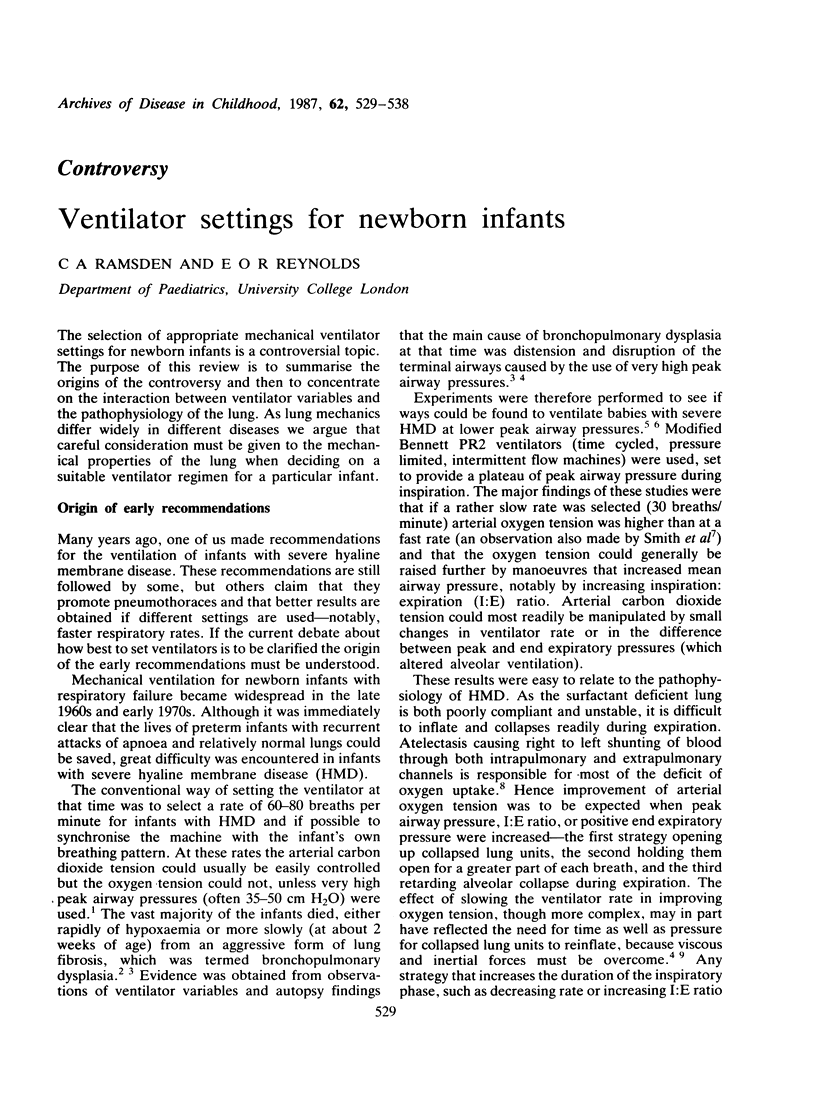
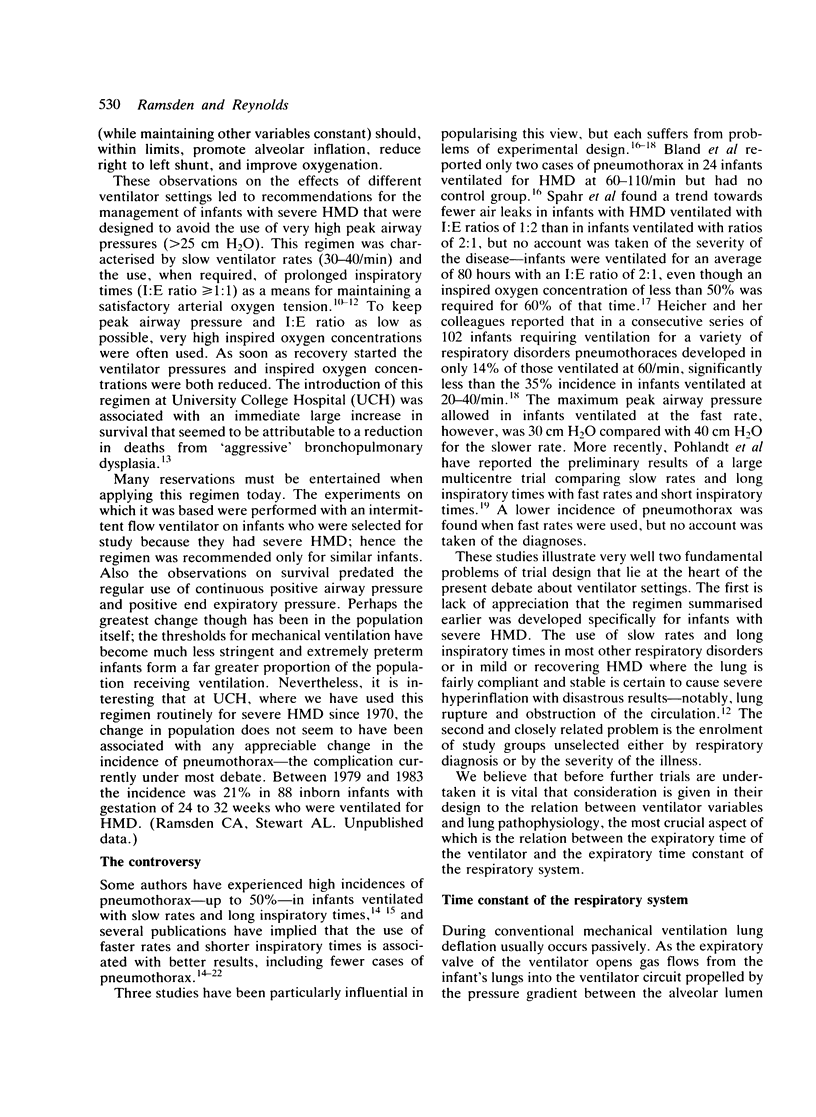
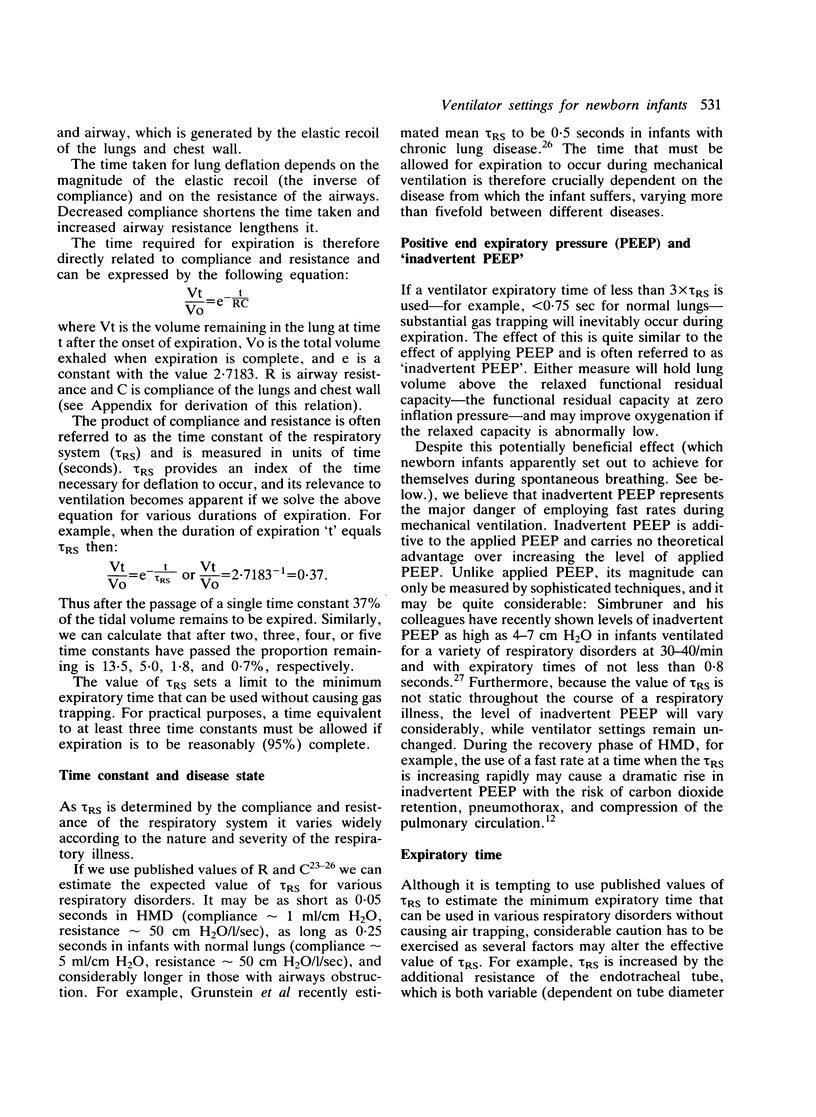
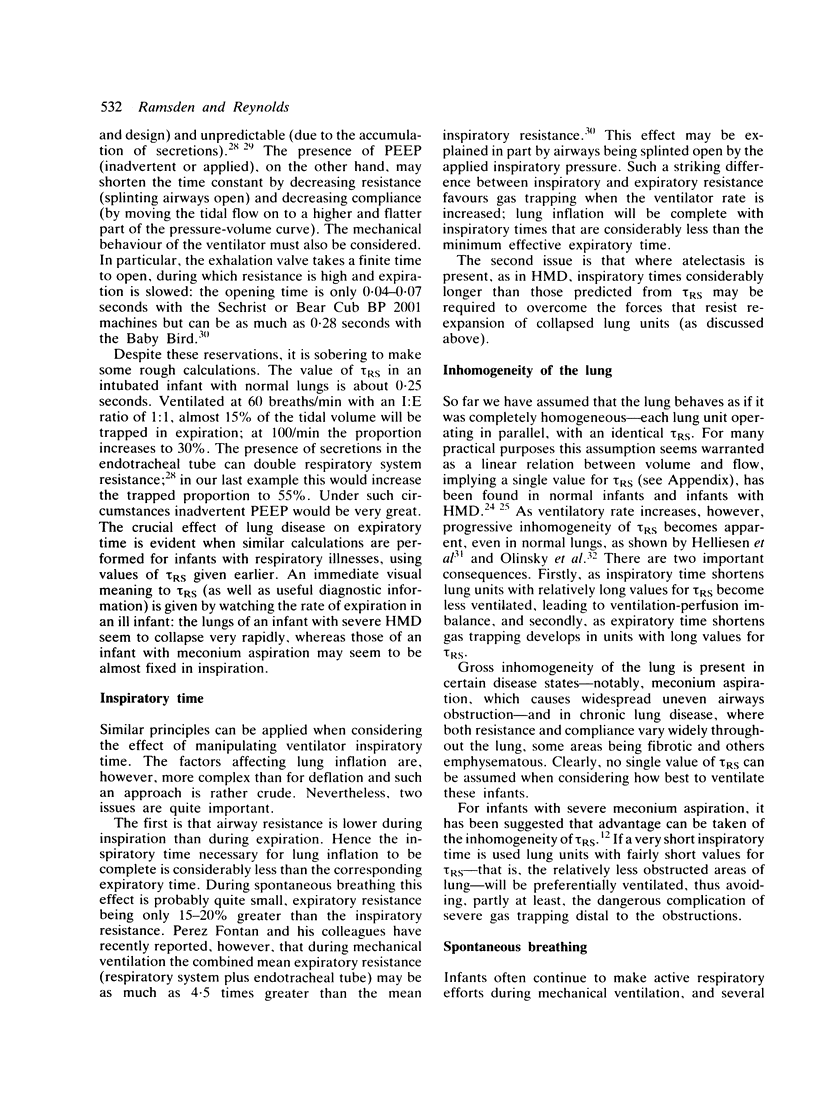
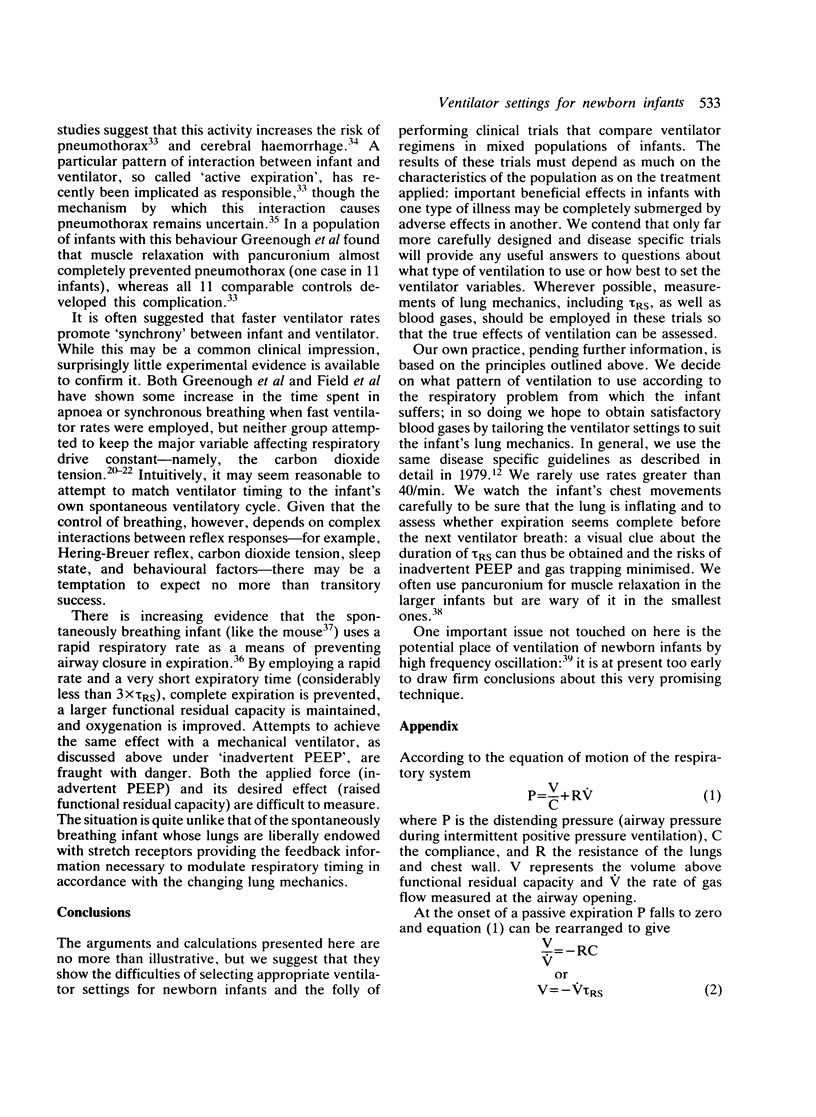
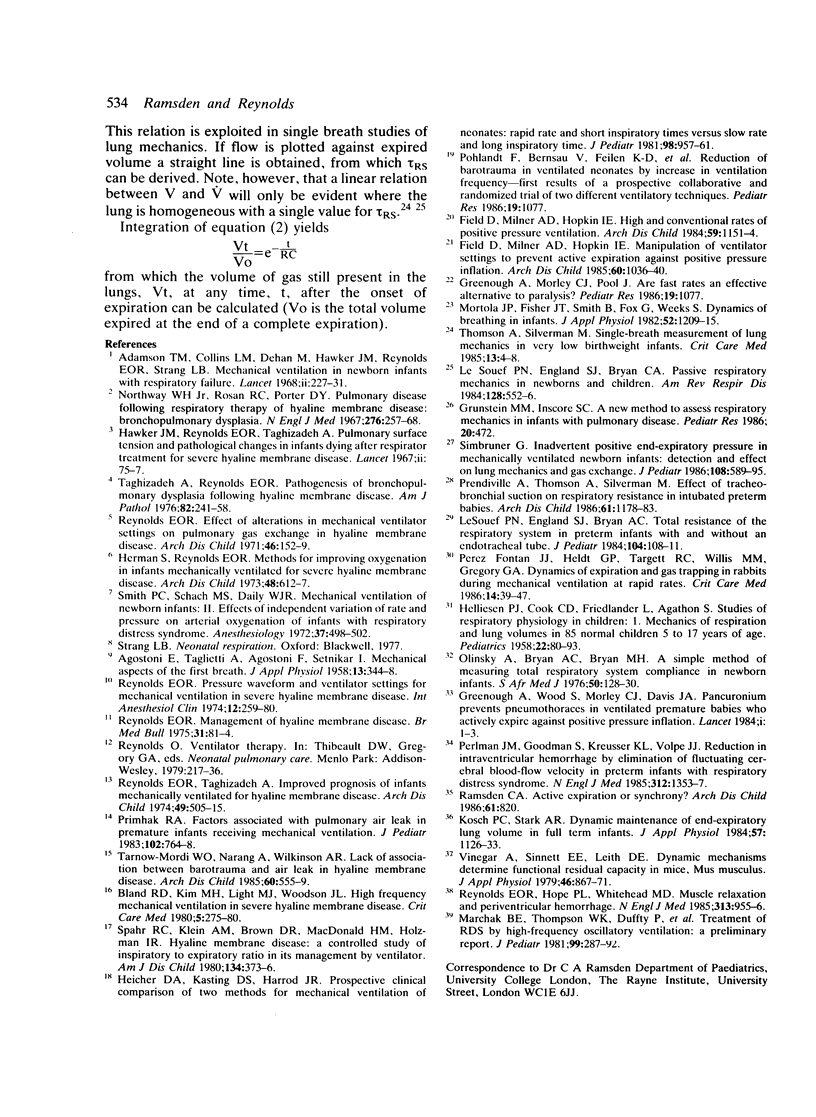
Selected References
These references are in PubMed. This may not be the complete list of references from this article.
- AGOSTONI E., TAGLIETTI A., AGOSTONI A. F., SETNIKAR I. Mechanical aspects of the first breath. J Appl Physiol. 1958 Nov;13(3):344–348. doi: 10.1152/jappl.1958.13.3.344. [DOI] [PubMed] [Google Scholar]
- Bland R. D., Kim M. H., Light M. J., Woodson J. L. High frequency mechanical ventilation in severe hyaline membrane disease an alternative treatment? Crit Care Med. 1980 May;8(5):275–280. doi: 10.1097/00003246-198005000-00001. [DOI] [PubMed] [Google Scholar]
- Field D., Milner A. D., Hopkin I. E. High and conventional rates of positive pressure ventilation. Arch Dis Child. 1984 Dec;59(12):1151–1154. doi: 10.1136/adc.59.12.1151. [DOI] [PMC free article] [PubMed] [Google Scholar]
- Field D., Milner A. D., Hopkin I. E. Manipulation of ventilator settings to prevent active expiration against positive pressure inflation. Arch Dis Child. 1985 Nov;60(11):1036–1040. doi: 10.1136/adc.60.11.1036. [DOI] [PMC free article] [PubMed] [Google Scholar]
- HELLIESEN P. J., COOK C. D., FRIEDLANDER L., AGATHON S. Studies of respiratory physiology in children. I. Mechanics of respiration and lung volumes in 85 normal children 5 to 17 years of age. Pediatrics. 1958 Jul;22(1 Pt 1):80–93. [PubMed] [Google Scholar]
- Hawker J. M., Reynolds E. O., Taghizadeh A. Pulmonary surface tension and pathological changes in infants dying after respirator treatment for severe hyaline membrane disease. Lancet. 1967 Jul 8;2(7506):75–77. doi: 10.1016/s0140-6736(67)92063-6. [DOI] [PubMed] [Google Scholar]
- Heicher D. A., Kasting D. S., Harrod J. R. Prospective clinical comparison of two methods for mechanical ventilation of neonates: rapid rate and short inspiratory time versus slow rate and long inspiratory time. J Pediatr. 1981 Jun;98(6):957–961. doi: 10.1016/s0022-3476(81)80604-x. [DOI] [PubMed] [Google Scholar]
- Herman S., Reynolds E. O. Methods for improving oxygenation in infants mechanically ventilated for severe hyaline membrane disease. Arch Dis Child. 1973 Aug;48(8):612–617. doi: 10.1136/adc.48.8.612. [DOI] [PMC free article] [PubMed] [Google Scholar]
- Kosch P. C., Stark A. R. Dynamic maintenance of end-expiratory lung volume in full-term infants. J Appl Physiol Respir Environ Exerc Physiol. 1984 Oct;57(4):1126–1133. doi: 10.1152/jappl.1984.57.4.1126. [DOI] [PubMed] [Google Scholar]
- LeSouef P. N., England S. J., Bryan A. C. Total resistance of the respiratory system in preterm infants with and without an endotracheal tube. J Pediatr. 1984 Jan;104(1):108–111. doi: 10.1016/s0022-3476(84)80605-8. [DOI] [PubMed] [Google Scholar]
- Lesouef P. N., England S. J., Bryan A. C. Passive respiratory mechanics in newborns and children. Am Rev Respir Dis. 1984 Apr;129(4):552–556. [PubMed] [Google Scholar]
- Marchak B. E., Thompson W. K., Duffty P., Miyaki T., Bryan M. H., Bryan A. C., Froese A. B. Treatment of RDS by high-frequency oscillatory ventilation: a preliminary report. J Pediatr. 1981 Aug;99(2):287–292. doi: 10.1016/s0022-3476(81)80480-5. [DOI] [PubMed] [Google Scholar]
- Mortola J. P., Fisher J. T., Smith B., Fox G., Weeks S. Dynamics of breathing in infants. J Appl Physiol Respir Environ Exerc Physiol. 1982 May;52(5):1209–1215. doi: 10.1152/jappl.1982.52.5.1209. [DOI] [PubMed] [Google Scholar]
- Olinsky A., Bryan A. C., Bryan M. H. A simple method of measuring total respiratory system compliance in newborn infants. S Afr Med J. 1976 Jan 31;50(5):128–130. [PubMed] [Google Scholar]
- Perlman J. M., Goodman S., Kreusser K. L., Volpe J. J. Reduction in intraventricular hemorrhage by elimination of fluctuating cerebral blood-flow velocity in preterm infants with respiratory distress syndrome. N Engl J Med. 1985 May 23;312(21):1353–1357. doi: 10.1056/NEJM198505233122104. [DOI] [PubMed] [Google Scholar]
- Prendiville A., Thomson A., Silverman M. Effect of tracheobronchial suction on respiratory resistance in intubated preterm babies. Arch Dis Child. 1986 Dec;61(12):1178–1183. doi: 10.1136/adc.61.12.1178. [DOI] [PMC free article] [PubMed] [Google Scholar]
- Primhak R. A. Factors associated with pulmonary air leak in premature infants receiving mechanical ventilation. J Pediatr. 1983 May;102(5):764–768. doi: 10.1016/s0022-3476(83)80254-6. [DOI] [PubMed] [Google Scholar]
- Pérez Fontán J. J., Heldt G. P., Targett R. C., Willis M. M., Gregory G. A. Dynamics of expiration and gas trapping in rabbits during mechanical ventilation at rapid rates. Crit Care Med. 1986 Jan;14(1):39–47. doi: 10.1097/00003246-198601000-00010. [DOI] [PubMed] [Google Scholar]
- Ramsden A. Active expiration or synchrony? Arch Dis Child. 1986 Aug;61(8):820–821. doi: 10.1136/adc.61.8.820. [DOI] [PMC free article] [PubMed] [Google Scholar]
- Reynolds E. O. Effect of alterations in mechanical ventilator settings on pulmonary gas exchange in hyaline membrane disease. Arch Dis Child. 1971 Apr;46(246):152–159. doi: 10.1136/adc.46.246.152. [DOI] [PMC free article] [PubMed] [Google Scholar]
- Reynolds E. O., Hope P. L., Whitehead M. D. Muscle relaxation and periventricular hemorrhage. N Engl J Med. 1985 Oct 10;313(15):955–956. doi: 10.1056/NEJM198510103131512. [DOI] [PubMed] [Google Scholar]
- Reynolds E. O. Pressure waveform and ventilator settings for mechanical ventilation in severe hyaline membrane disease. Int Anesthesiol Clin. 1974 Winter;12(4):259–280. doi: 10.1097/00004311-197412040-00015. [DOI] [PubMed] [Google Scholar]
- Reynolds E. O., Taghizadeh A. Improved prognosis of infants mechanically ventilated for hyaline membrane disease. Arch Dis Child. 1974 Jul;49(7):505–515. doi: 10.1136/adc.49.7.505. [DOI] [PMC free article] [PubMed] [Google Scholar]
- Simbruner G. Inadvertent positive end-expiratory pressure in mechanically ventilated newborn infants: detection and effect on lung mechanics and gas exchange. J Pediatr. 1986 Apr;108(4):589–595. doi: 10.1016/s0022-3476(86)80845-9. [DOI] [PubMed] [Google Scholar]
- Smith P. C., Schach E., Daily W. J. Mechanical ventilation of newborn infants. II. Effects of independent variation of rate and pressure on arterial oxygenation of infants with respiratory distress syndrome. Anesthesiology. 1972 Nov;37(5):498–502. [PubMed] [Google Scholar]
- Spahr R. C., Klein A. M., Brown D. R., MacDonald H. M., Holzman I. R. Hyaline membrane disease. A controlled study of inspiratory to expiratory ratio in its management by ventilator. Am J Dis Child. 1980 Apr;134(4):373–376. doi: 10.1001/archpedi.1980.04490010031011. [DOI] [PubMed] [Google Scholar]
- Taghizadeh A., Reynolds E. O. Pathogenesis of bronchopulmonary dysplasia following hyaline membrane disease. Am J Pathol. 1976 Feb;82(2):241–264. [PMC free article] [PubMed] [Google Scholar]
- Tarnow-Mordi W. O., Narang A., Wilkinson A. R. Lack of association between barotrauma and air leak in hyaline membrane disease. Arch Dis Child. 1985 Jun;60(6):555–559. doi: 10.1136/adc.60.6.555. [DOI] [PMC free article] [PubMed] [Google Scholar]
- Thomson A., Silverman M. Single-breath measurement of lung mechanics in very low birth weight infants. Crit Care Med. 1985 Jan;13(1):4–8. doi: 10.1097/00003246-198501000-00002. [DOI] [PubMed] [Google Scholar]
- Vinegar A., Sinnett E. E., Leith D. E. Dynamic mechanisms determine functional residual capacity in mice, Mus musculus. J Appl Physiol Respir Environ Exerc Physiol. 1979 May;46(5):867–871. doi: 10.1152/jappl.1979.46.5.867. [DOI] [PubMed] [Google Scholar]


